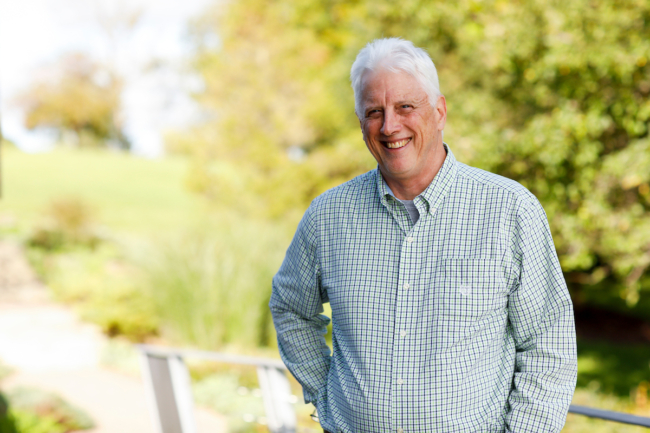The Changelings
Mission
The Changelings' mission is to pool their collective vision and their interdisciplinary resources to help answer the most challenging questions about abrupt climate change; to catalyze new research and field work in basic science by leveraging paleoclimate insights to inform and guide current climate science, and to empower and mentor the next generation of climate scientists.
History
In 1999, NOAA’s Global Change program convened a group of scientists charging them with looking into the causes and future implications of the large abrupt climate global changes which punctuated glacial time. The idea was to bring together both people versed in the operation of the Earth’s atmosphere and ocean and people versed in the records kept in polar ice, ocean sediments, and mountain moraines.
The first meeting of this group took place in March 1999. Subsequent meetings were held in places where the group could observe glacial deposits representing the Last Glacial Maximum, the Younger Dryas, and the Little Ice Age.
When NOAA’s sponsorship closed in 2004, Gary Comer offered to "adopt" the group by hosting its meetings.
–Wally Broecker
Jess Adkins
Smits Family Professor

Richard Alley
Evan Pugh Professor Department of Geosciences
Iceberg Calving: Regimes and Transitions
Multidecadal pre- and post-collapse dynamics of the northern Larsen Ice Shelf, Shujie Wang, Hongxing Liu, Richard B. Alley, Kenneth Jezek, Patrick Alexander, Karen E. Alley, Zhengrui Huang, Lei Wang
Iceberg Calving: Regimes and Transitions R.B. Alley, K.M. Cuffey, J.N. Bassis, K.E. Alley, S. Wang, B.R. Parizek, S. Anandakrishnan, K. Christianson, R.M. DeContoAnnual Review of Earth and Planetary Sciences 2023 51:1, 189-215
Alley, R.B., N. Holschuh, D.R. MacAyeal, B.R. Parizek, L. Zoet, K. Riverman, A. Muto, K. Christianson, E. Clyne, S. Anandakrishnan, N. Stevens, GHOST Collaboration. 2021. Bedforms of Thwaites Glacier, West Antarctica: Character and origin. Journal of Geophysical Research—Earth Surface 126, e2021JF006339.
DeConto, R.M., D. Pollard, R.B. Alley, I. Velicogna, E. Gasson, N. Gomez, S. Sadai, A. Condron, D.M. Gilford, E.L. Ashe, R.E. Kopp, D. Li and A. Dutton. 2021. The Paris Climate Agreement and future sea-level rise from Antarctica. Nature 593, 83–89.
Melton, S.M., R.B. Alley, S. Anandakrishnan, B.R. Parizek, M.G. Shahin, L.A. Stearns, A.L. LeWinter and D.C. Finnegan. 2022. Meltwater drainage and iceberg calving observed in high spatial and temporal resolution at Helheim Glacier, Greenland. Journal of Glaciology 1-17.

Robert Anderson
Ewing Lamont Research Professor, Lamont Doherty Earth Observatory
This is the link to the paper that covers the same material as I presented in my talk at the Changelings meeting last year (2024).
This a link to another paper that has important implications for the relationship between climate and ocean circulation.
Deep-Sea Oxygen Depletion and Ocean Carbon Sequestration During the Last Ice Age, Global Biogeochemical Cycles

David Battisti
Professor & Tamaki Endowed Chair Dept. of Atmospheric Sciences
Vargas Zeppetello, L.R., D.S. Battisti and M.B. Baker: The Physics of Heat Waves: Why Do Persistent, Extremely High Temperatures Occur Over Land? Revised, J. of Climate, Aug.
Abatzoglou, J.T., D.S. Battisti, A.P. Williams, W.D. Hansen, B.J. Harvey and C.A. Kolden: Continued increases in western US forest fire despite growing fuel constraints. Submitted, Nature Communications, July.

Wallace Broecker
1931-2019Newberry Professor of Geology Lamont Doherty Earth Observatory
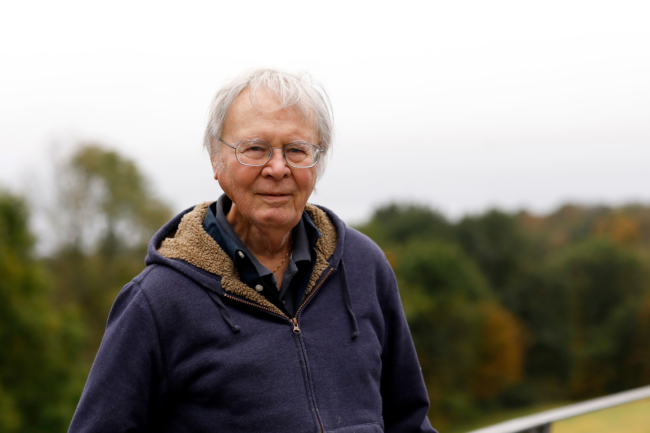
Ed Brook
Distinguished Professor of Earth, Ocean & Atmospheric Sciences
Multiple carbon cycle mechanisms associated with the glaciation of Marine Isotope Stage 4, Nature Communications
Abrupt changes in the global carbon cycle during the last glacial period, Nature Geoscience
The SP19 chronology for the South Pole Ice Core - Part 2: gas chronology, Δage, and smoothing of atmospheric records, Climate of the Past
Antarctic and global climate history viewed from ice cores, Nature
An 83,000-year-old ice core from Roosevelt Island, Ross Sea, Antarctica, Climate of the Past
Google Scholar Profile
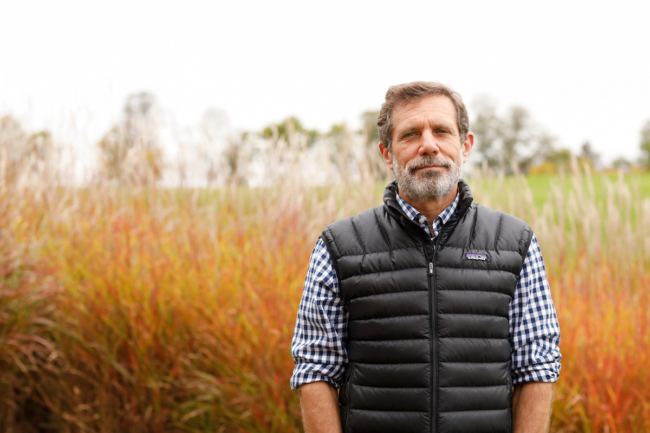
John Chiang
Professor & Graduate Advisor, Department of Geography
Maffre, P., Chiang, J.C. and Swanson-Hysell, N.L., 2023. The effect of the Pliocene temperature pattern on silicate weathering and Pliocene–Pleistocene cooling. Climate of the Past, 19(7), pp.1461-1479.
Chiang, J.C., Atwood, A.R., Vimont, D.J., Nicknish, P.A., Roberts, W.H., Tabor, C.R. and Broccoli, A.J., 2022. Two annual cycles of the Pacific cold tongue under orbital precession. Nature, 611(7935), pp.295-300.
Chiang, J.C.H., Kong, W., Wu, C.H. and Battisti, D.S., 2020. Origins of East Asian Summer Monsoon Seasonality. Journal of Climate, 33(18), pp.7945-7965.
Chiang, J.C., Herman, M.J., Yoshimura, K. and Fung, I.Y., 2020. Enriched East Asian oxygen isotope of precipitation indicates reduced summer seasonality in regional climate and westerlies. Proceedings of the National Academy of Sciences.
Lamy, F., Chiang, J.C., Martínez-Méndez, G., Thierens, M., Arz, H.W., Bosmans, J., Hebbeln, D., Lambert, F., Lembke-Jene, L. and Stuut, J.B., 2019. Precession modulation of the South Pacific westerly wind belt over the past million years. Proceedings of the National Academy of Sciences, 116(47), pp.23455-23460.

George Denton
Professor, School of Earth & Climate Sciences, Climate Change Institute
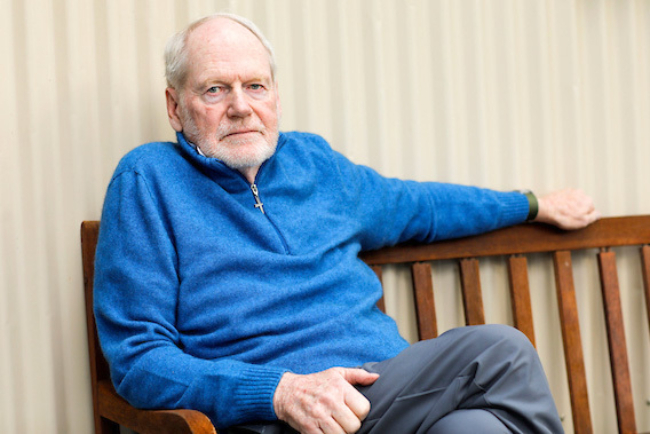
Larry Edwards
Regents, Gunn, & Distinguished McKnight University Professor Department of Earth Sciences

Sidney Hemming
Professor, Lamont Doherty Earth Observatory
Detrital geochronology and lithologic signatures of Weddell Sea Embayment ice streams, Antarctica--Implications for subglacial geology and ice sheet history, The Geological Society of America
Latitudinal Migrations of the Subtropical Front at the Agulhas Plateau Through the Mid-Pleistocene Transition, Paleoceanography and Paleoclimatology
Rapid Erosion of the central Transantarctic Mountains at the Eocene and Oligocene Transition: Evidence from skewed (U-Th)/He date distributions near Beardmore Glacier, Earth and Planetary Science Letters
Rock varnish record of the African Humid Period in Lake Turkana basin of East Africa, The Holocene
A large West Antarctic Ice Sheet explains early Neogene sea-level amplitude, Nature
Late Pleistocene Emergence of Crystalline Canadian Shield Sources in Sediments of the Northern Gulf of Mexico, Paleoceanography and Paleoclimatology
Antarctic icebergs reorganize ocean circulation during Pleistocene glacials, Nature
Strong glacial-interglacial variability in upper ocean hydrodynamics, biogeochemistry, and productivity in the Southern Indian Ocean, Communications Earth & Environment
Plio-Pleistocene Continental Hydroclimate and Indian Ocean Sea Surface Temperatures at the Southeast African Margin, Paleoceanography and Paleoclimatology
Indo-Pacific Walker circulation drove Pleistocene African aridification, Nature
Latitudinal Variance in the Drivers and Pacing of Warmth During Mid-Pleistocene MIS 31 in the Antarctic Zone of the Southern Ocean, Paleoceanography and Paleoclimatology
Antiphased dust deposition and productivity in the Antarctic Zone over 1.5 million years, Nature Communications
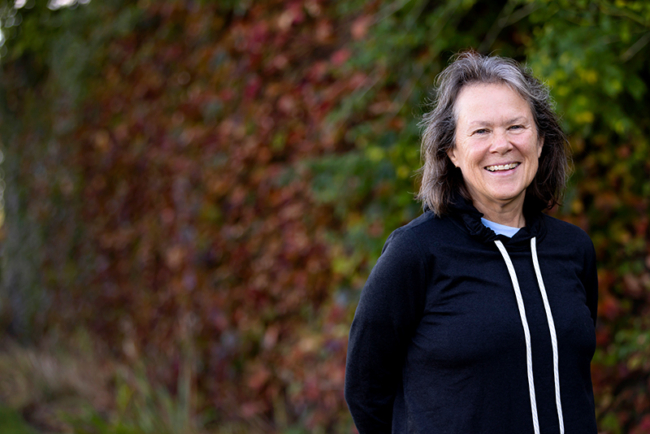
Gideon Henderson
Professor
Vaks A., Mason A., Breitenbach S.F.M., Giesche A., Osinzev A., Adrian I., Kononov A., Umbo S., Lechleitner F.A., Rosensaft M., Henderson G.M. Arctic speleothems reveal nearly permafrost-free Northern Hemisphere in the late Miocene (2025) Nature Communications , 16 (1), art. no. 5483
Couper H.O., Day C.C., Barrott J.J., Hollowood S.J., Carolin S.A., Lovett B., Bouzouggar A., Barton N., Henderson G.M. Evidence for the role of tropical plumes in driving mid-Holocene north-west Sahara rainfall (2025) Earth and Planetary Science Letters, 652, art. no. 119195
Harrington K.J., Henderson G.M., Hilton R.G. Current rates of CO2 removal due to rock weathering in the UK (2024) Science of the Total Environment, 957, art. no. 177458
Margerum J., Homann J., Umbo S., Nehrke G., Hoffmann T., Vaks A., Kononov A., Osintsev A., Giesche A., Mason A., Lechleitner F.A., Henderson G.M., Kwiecien O., Breitenbach S.F.M. Reconstruction of Holocene and Last Interglacial vegetation dynamics and wildfire activity in southern Siberia (2025) Climate of the Past, 21 (3), pp. 661 - 677
Dickson A.J., Bryan A.L., George E., Henderson G.M., Porcelli D., Rolison J., Slomp C.P., Middag R., Stirling C.H. Behaviour of cadmium isotopes in sulfidic waters and sediments of the Black Sea: Implications for global cadmium cycling and the application of cadmium isotopes as a paleo-oceanographic proxy (2025) Earth and Planetary Science Letters, 662, art. no. 119408
An exciting paper from 2020: Vaks, A., Mason, A.J., Breitenbach, S.F.M. et al. Palaeoclimate evidence of vulnerable permafrost during times of low sea ice. Nature 577, 221–225 (2020).
And, getting a bit old now, but at the interface between my research and policy work: Greenhouse gas removal, The Royal Society, September, 2018.

Peter Huybers
Professor of Earth and Planetary Sciences
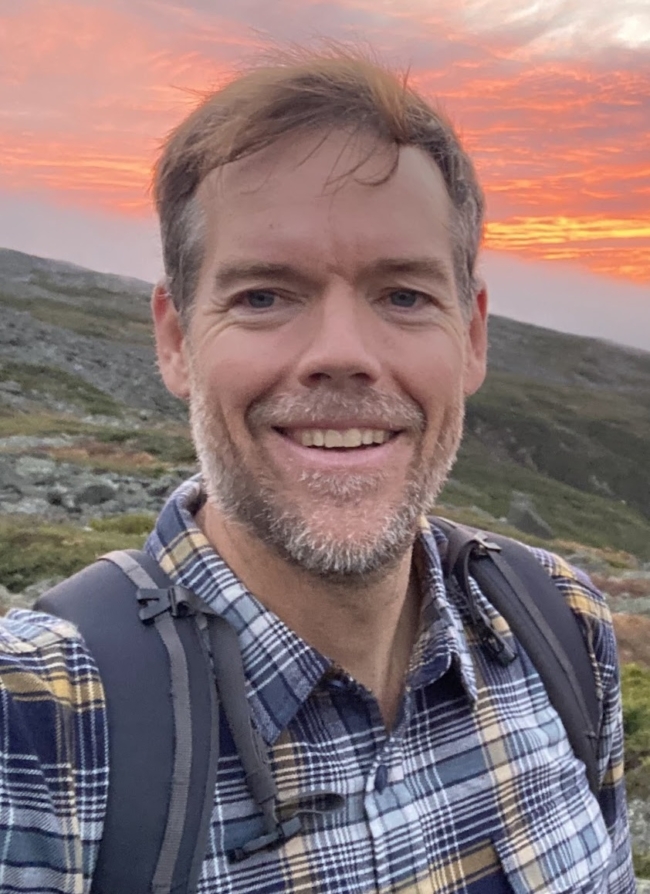
Charles Langmuir
Professor of Geochemistry, Department of Earth & Planetary Sciences

Jean Lynch-Stieglitz
Associate Chair, Professor
Vollmer, T.D., T. Ito, J. Lynch-Stieglitz, Proxy-based preformed phosphate estimates point to increased biological pump efficiency as primary cause of last glacial maximum CO2 drawdown, Paleoceanography and Paleoclimatology, 37, e2021PA004339, 2022.
Lakhani, K.Q, J. Lynch-Stieglitz, M.M. Monteagudo, Constraining calcification habitat using oxygen isotope measurements in tropical planktonic foraminiferal tests from surface sediments, Marine Micropaleontology, 170, 2022.
Monteagudo, M.M., J. Lynch-Stieglitz, T.M. Marchitto and M.W. Schmidt, Central Equatorial Pacific cooling during the Last Glacial Maximum, Geophysical Research Letters, 48, 2021.
Constraining calcification habitat using oxygen isotope measurements in tropical planktonic foraminiferal tests from surface sediments, Marine Micropaleontology
Central Equatorial Pacific Cooling During the Last Glacial Maximum, Geophysical Research Letters
Intermediate water circulation changes in the Florida Straits from a 35 ka record of Mg/Li-derived temperature and Cd/Ca-derived seawater cadmium, Earth and Planetary Science Letters
Temperature-dependent ocean–atmosphere equilibration of carbon isotopes in surface and intermediate waters over the deglaciation, Earth and Planetary Science Letters
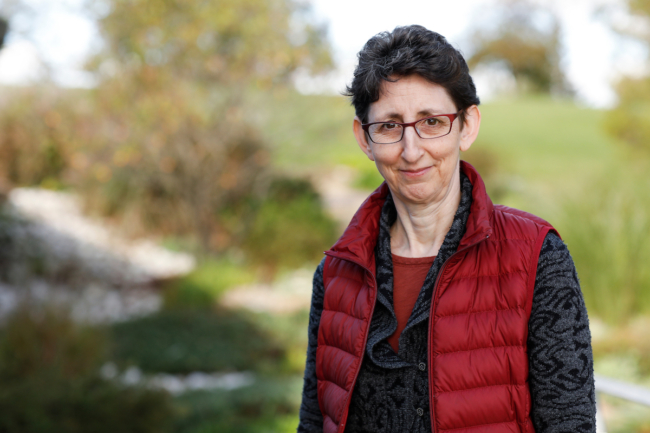
David McGee
Kerr-Mcgee Career Development Assistant Professor
Increasing Pleistocene permafrost persistence and carbon cycle conundrums inferred from Canadian speleothems, Science Advances
C.Y. Chen et al., 2020. U-Th dating of lake sediments: Lessons from the 700 kyr sediment record of Lake Junín, Peru. Quaternary Science Reviews 244, 106422.
D. McGee, 2020. Glacial-interglacial precipitation changes. Annual Review of Marine Science 12, 525-557.
C. Skonieczny et al., 2019. Monsoon-driven Saharan dust variability over the last 240,000 years. Science Advances 5, doi: 10.1126/sciadv.aav1887.
D. McGee et al., 2018. Western U.S. lake expansions during Heinrich stadials linked to Pacific Hadley circulation. Science Advances 4, doi: 10.1126/sciadv.aav0118.
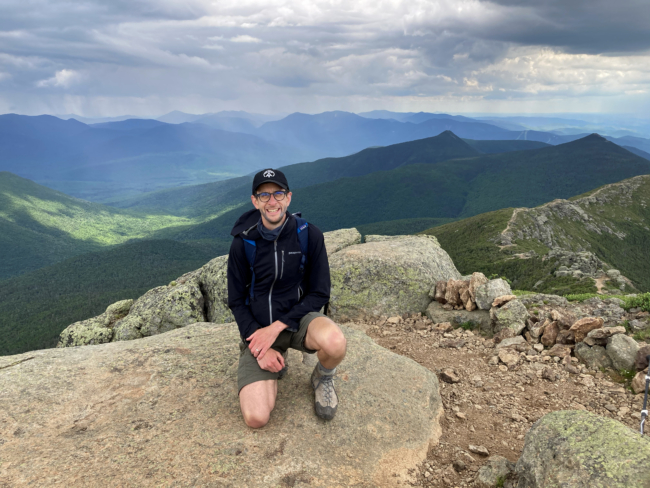
Jerry McManus
Professor, Lamont Doherty Earth Observatory
Pallone, C. T., McManus, J. F., and Jacobel, A. W., Eastern equatorial Pacific paleo-productivity and carbon cycling during the late Pleistocene, Earth and Planetary Science Letters, v. 656, p. 119255, 2025.
Zhou, Y., and McManus, J. F., Heinrich event ice discharge and the fate of the Atlantic Meridional Overturning Circulation, Science, v. 384, no. 6699, p. 983-986, 2024.
Authigenic uranium deposition in the glacial North Atlantic: Implications for changes in oxygenation, carbon storage, and deep water-mass geometry, Quaternary Science Reviews, Y. Zhou, J.F. McManus
Extensive evidence for a last interglacial Laurentide outburst (LILO) event, Geology
Kipp, L.E., McManus, J. F., and Kienast, M., Radioisotope constraints of deepwater export from the Arctic to the North Atlantic, Nature Communications, v. 12, no. 12021, 2021.
Zhou, Y., McManus, J. F., Jacobel, A. W., Costa, K. M., Wang, S., and Alvarez Caraveo, B., Enhanced iceberg discharge in the western North Atlantic during all Heinrich events of the last glaciation, Earth and Planetary Science Letters, v. 564, p. 116910, 2021.
Brovkin, V., Brook, E., Williams, J. W., Bathiany, S., Lenton, T. M., Barton, M., DeConto, R. M., Donges, J. F., Ganopolski, A., McManus, J., Praetorius, S., de Vernal, A., Abe-Ouchi, A., Cheng, H., Claussen, M., Crucifix, M., Gallopín, G., Iglesias, V., Kaufman, D. S., Kleinen, T., Lambert, F., van der Leeuw, S., Liddy, H., Loutre, M.-F., McGee, D., Rehfeld, K., Rhodes, R., Seddon, A. W. R., Trauth, M. H., Vanderveken, L., and Yu, Z., 2021, Past abrupt changes, tipping points and cascading impacts in the Earth system, Nature Geoscience, v. 14, no. 8, p. 550-558, 2021.
Productivity and sediment focusing in the Eastern Equatorial Pacific during the last 30,000 years, Deep Sea Research Part I: Oceanographic Research Papers
Last glacial atmospheric CO2 decline due to widespread Pacific deep-water expansion, Nature Geoscience

Gina Moseley
Innsbruck Quaternary Research GroupAssistant Professor
How uncharted caves in Greenland could predict the Earth's future
Meet The Polar Explorer Tackling Greenland’s Most Remote Caves. Vogue.
What Arctic Caves Can Tell Us About Our Climate Future. Wired.
Töchterle, P., Baldo, A., Murton, J. B., Schenk, F., Edwards, R. L., Koltai, G., and Moseley, G. E.: Reconstructing Younger Dryas ground temperature and snow thickness from cave deposits, Clim. Past, 20, 1521–1535, 2024.
230Th/U Isochron Dating of Cryogenic Cave Carbonates, Geochronology Discuss. [preprint], https://doi.org/10.5194/gchron-2022-10, in review, 2022.
Lagrangian detection of precipitation moisture sources for an arid region in northeast Greenland: relations to the North Atlantic Oscillation, sea ice cover, and temporal trends from 1979 to 2017, Weather Clim. Dynam., 2, 1–17.
Speleothem record of mild and wet mid-Pleistocene climate in northeast Greenland, Science Advances
Cave and Karst Science, British Cave Research Association
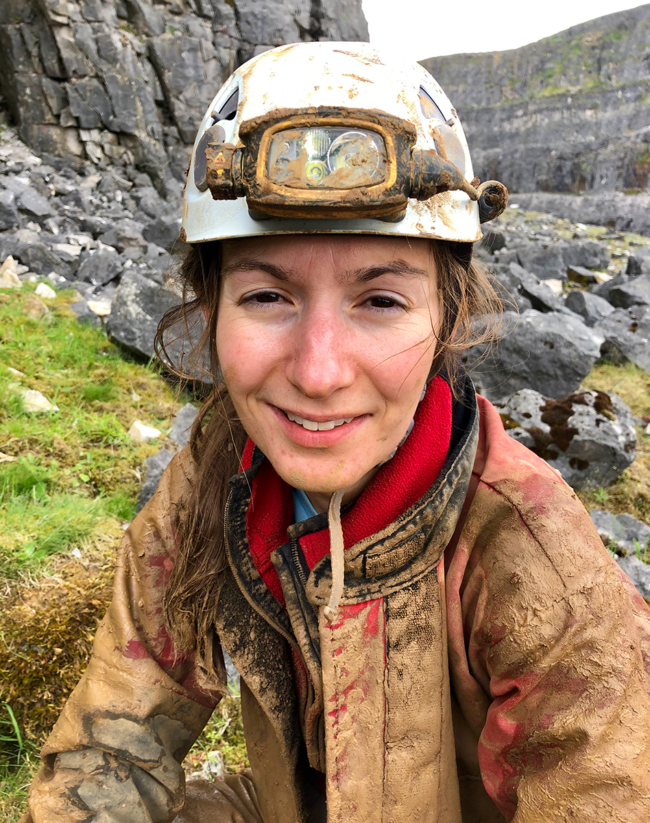
Raymond Pierrehumbert
Halley Professor of Physics

Aaron Putnam
Associate Professor, School of Earth and Climate Sciences
Hall, B., Lowell, T., Bromley, G., Putnam, A., Allen, K. Rapid deglaciation of eastern Maine, northeastern North America, during Heinrich Stadial 1. Quaternary Science Reviews 363, 109444. PDF
Shu, P., Zhou, W., Putnam, A.E., Li, B., Kang, S., Sha, Y., Kong, W., Shi, Z., Ming, G., Wang, H., Sun, Y., Wright, D.K., Liu, W., Liu X., Cheng, P., Song, Y., Niu, D., Dodson, J.R., Du, H., Zhao, J., Zhang, Z., Qiu, Y., An, Z., 2025. Intensified monsoonal rainstorm events over westerly-dominated Asian interior during the warm mid-Holocene. Nature Communications Earth & Environment 6, 72. PDF
*Strand, P.S., Putnam, A.E., Schaefer, J.M., Denton, G.H., Barrell, D.J.A., 2024. Tracking rapid ice recession in a major Southern Alps valley during the last glacial termination. Quaternary Science Reviews 335, 108737. PDF
Putnam, A., Denton, G.H., Schaefer, J.M., 2023. A 10Be chronology of the Esmark Moraine and Lysefjorden region, southwestern Norway: Evidence for coeval glacier resurgence in both polar hemispheres during the Antarctic Cold Reversal. Quaternary Science Reviews 316, 108259.
Tirrell, A.J.., Putnam, A.E., Cianchette, M.I.J., Gill, J.L., 2023. Using photogrammetry to create virtual permanent plots in rare and threatened plant communities. Applications in Plant Sciences e11534.
Bromley, G., Putnam, A., Hall, B., Rademaker, K., Thomas, H., Balter-Kennedy, A., Barker, S., Rice, D., 2023. Lateglacial shifts in seasonality reconcile conflicting North Atlantic temperature signals. Journal of Geophysical Research – Earth Surface 128, e2022JF006951.
Audet, A.C., Putnam, A.E., Russell, J.L., Lorrey, A., Mackintosh, A., Andersen, B., Denton, G.H., 2022. Correspondence among mid-latitude glacier equilibrium line altitudes, atmospheric temperatures, and westerly wind fields. Geophysical Research Letters 49, e2022GL099897.
Denton, G.H., Toucanne, S., Putnam, A.E., Barrell, D.J.A., Russell, J.L., 2022. Heinrich Summers. Quaternary Science Reviews 295, 107750
Putnam, A.E., 2022. Sediment study finds the pulsebeat of tropical glaciers. Nature 607, 241-243.
*Strand, P.D., Putnam, A.E., Sambuu, O., Putnam, D.E., Denton, G.H., Schaefer, J.M., *Radue, M.J., Dorj, A., Amarsaikhan, P., Stevens, J., Cole, D., 2022. A 10Be moraine chronology of the Last Glaciation and Termination at 49°N in the Mongolian Altai of Central Asia. Paleoceanography and Paleoclimatology 37, e2022PA004423.
Denton, G.H., Putnam, A.E., Russell, J.L., Barrell, D.J.A., Schaefer, J.M., Kaplan, M.R., *Strand, P.D., 2021. The Zealandia Switch: Ice age climate shifts viewed from Southern Hemisphere moraines. Quaternary Science Reviews 257, 106771.

Ros Rickaby
Professor
Size-dependent dynamics of the internal carbon pool drive isotopic vital effects in calcifying phytoplankton, N Chauhan, REM Rickaby, Geochimica et Cosmochimica Acta 373, 35-51
Eocene emergence of highly calcifying coccolithophores despite declining atmospheric CO2, LM Claxton, HLO McClelland, M Hermoso, REM Rickaby, Nature Geoscience 15 (10), 826-831
Repeated species radiations in the recent evolution of the key marine phytoplankton lineage Gephyrocapsa, Nature
The origin of carbon isotope vital effects in coccolith calcite, Nature
Susceptibility of algae to Cr toxicity reveals contrasting metal management strategies, Association for the Sciences of Limnology and Oceanography

Joellen Russell
Distinguished Professor
What Is Endangered Now? Climate Science at the Crossroads, AGU Advances
Importance of wind and meltwater for observed chemical and physical changes in the Southern Ocean, Nature Geoscience
Representation of Southern Ocean properties across Coupled Model Intercomparison Project generations: CMIP3 to CMIP6, J. Climate

Jeff Severinghaus
Professor of Geosciences, Scripps Institution of Oceanography
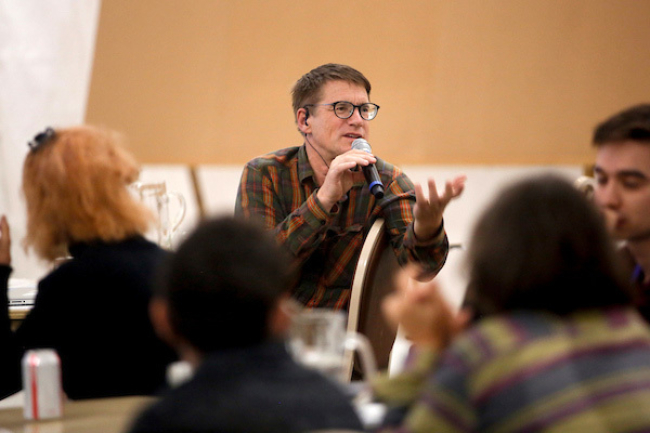
Daniel Sigman
Dusenbury Professor, Geological & Geophysical Sciences

Heather Stoll
Professor
Stoll, H.M., Bolton, C.T., Jaggi, M., Martinez-Garcia, A., and Bernasconi, S. Divergent estimates of Miocene to Pleistocene upper ocean temperatures in the South Atlantic Ocean from alkenone and coccolith clumped isotope proxies. Climate of the Past Discussions.
Torner, Judit, Isabel Cacho, Heather Stoll, Ana Moreno, Joan O. Grimalt, Francisco J. Sierro, Joan J. Fornós, Hai Cheng, and R. Lawrence Edwards. "New age constraints for glacial terminations IV, III, and III. a based on western Mediterranean speleothem records." Climate of the Past 21, no. 2 (2025): 465-487
Pérez-Mejías, Carlos, Jian Wang, Youfeng Ning, Ana Moreno, Antonio Delgado-Huertas, R. Lawrence Edwards, Hai Cheng, and Heather M. Stoll. "Climate controls on speleothem initial 234U/238U ratios in midlatitude settings over two glacial cycles." Geochimica et Cosmochimica Acta 389 (2025): 265-279.
Stoll, Heather M., Chris Day, Franziska Lechleitner, Oliver Kost, Laura Endres, Jakub Sliwinski, Carlos Pérez-Mejías, Hai Cheng, and Denis Scholz. "Distinguishing the combined vegetation and soil component of δ 13 C variation in speleothem records from subsequent degassing and prior calcite precipitation effects." Climate of the Past 19, no. 12 (2023): 2423-2444.
Torres-Romero, I., Zhang, H., Wijker, R. S., Clark, A. J., McLeod, R. E., Jaggi, M., & Stoll, H. M. (2024). Hydrogen isotope fractionation is controlled by CO2 in coccolithophore lipids. Proceedings of the National Academy of Sciences, 121(26).
Stoll, H. M., Day, C., Lechleitner, F., Kost, O., Endres, L., Sliwinski, J., ... & Scholz, D. (2023). Distinguishing the combined vegetation and soil component of δ 13 C variation in speleothem records from subsequent degassing and prior calcite precipitation effects. Climate of the Past, 19(12), 2423-2444.
Stoll, Heather M., et al. "Nonlinear increase in seawater 87 Sr/86 Sr in the Oligocene to early Miocene and implications for climate-sensitive weathering." Climate of the Past 20.1 (2024): 25-36.

Lynne Talley
Distinguished Professor, Scripps Institution of Oceanography
Taylor, B. A., J. Shi, S. Xie, L. D. Talley, M. T. Luongo, and Q. Peng, 2025: Warming Band in Southern Ocean’s Indian Sector: The Role of Remote Atlantic Buoyancy Forcing via Poleward-Shifting Circulation Response. J. Climate, 38, 3219–3238
Prend, C.J., A.R. Gray, L.D. Talley, S.T. Gille, F.A. Haumann, K.S. Johnson, S.C.Riser, I. Rosso, J. Sauve, and J.L. Sarmiento, 2022. Indo-Pacific sector dominates Southern Ocean carbon outgassing. Global Biogeochemical Cycles, 36, e2021GB007226.
Chen, H., Haumann, F. A., Talley, L. D., Johnson, K. S., & Sarmiento, J. L. (2022). The deep ocean's carbon exhaust. Global Biogeochemical Cycles, 36, e2021GB007156.
Shi, J.-R., L. D. Talley, S.-P. Xie, Q. Peng, and W. Liu, 2021. Ocean warming and accelerating Southern Ocean zonal flow. Nature Climate Change, 2021, doi:10.1038/s41558-021-01212-5.
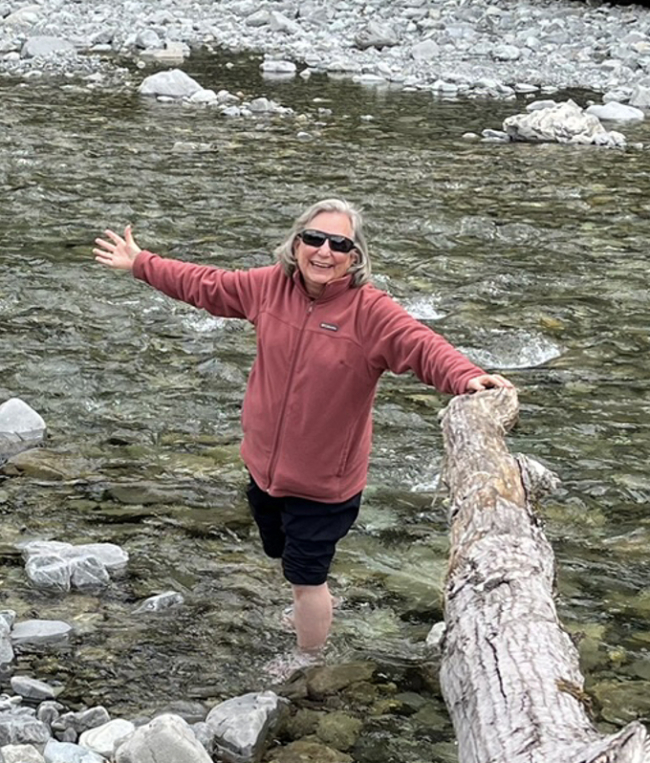
J. Robert Toggweiler
GFDL/NOAA (retired)
